Thailand
A country of modern cities steeped in history, adorned with ornate royal palaces and archaeological ruins, and rich with natural beauty, Thailand is an adventure paradise. The turquoise waters of the Gulf of Tonkin lap against tropical islands and white-sand beaches that spread along more than 2,000 miles of coastline—whether you want to swim and snorkel, relax at a luxury spa, or dance all night long, Thailand has a beach destination for every occasion. While the country’s cities boast modern architecture and flair, the rural countryside is caught in a pleasant pastoral past—rice paddies and farmland fill in around cities and highways, forests and mountains. No matter where you choose to travel, delicious Thai cuisine will be your constant companion—local produce, fresh seafood, and spicy peppers are essential components to street food and fine-dining alike.
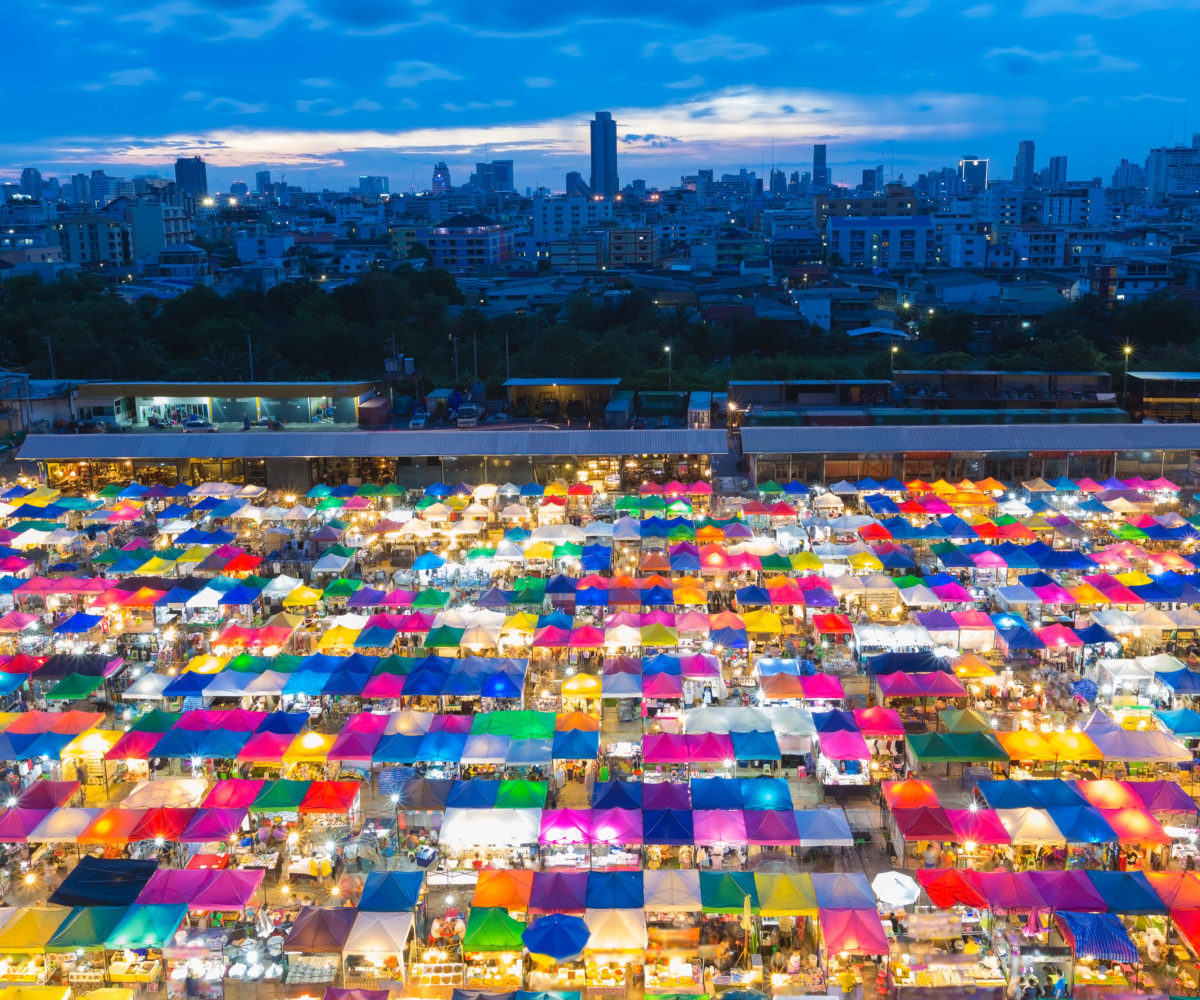
Bangkok
Thailand’s cacophonous capital city of over 8 million people is a delightful chorus of ancient opulence and mad-dash modern. Intricate religious shrines stand in the shadow of the glittering skyline, and the ultra-efficient Skytrain passes swiftly over chaotic streets filled with three-wheeled tuk-tuks and pedestrians markets. Bangkok is a sensory smorgasbord and above all else is about food and fun—wander the narrow lanes of Banglamphu for its decadent street-side food stalls, or head to the upscale Sukhumvit and Silom districts for a taste of global cuisine and nightlife. Take a break from the activity of the streets and take a stroll on the shaded paths of Lumpini Park, or visit the religious and historic heart of the monarchy in the Rattanakosin royal district and tour the elegant Grand Palace and Wat Phra Kaew, the sacred temple of the Emerald Buddha. Float along the Chao Phraya River and tour the city’s canals in a long-tail boat, drifting through this exotic 21st-century cityscape.
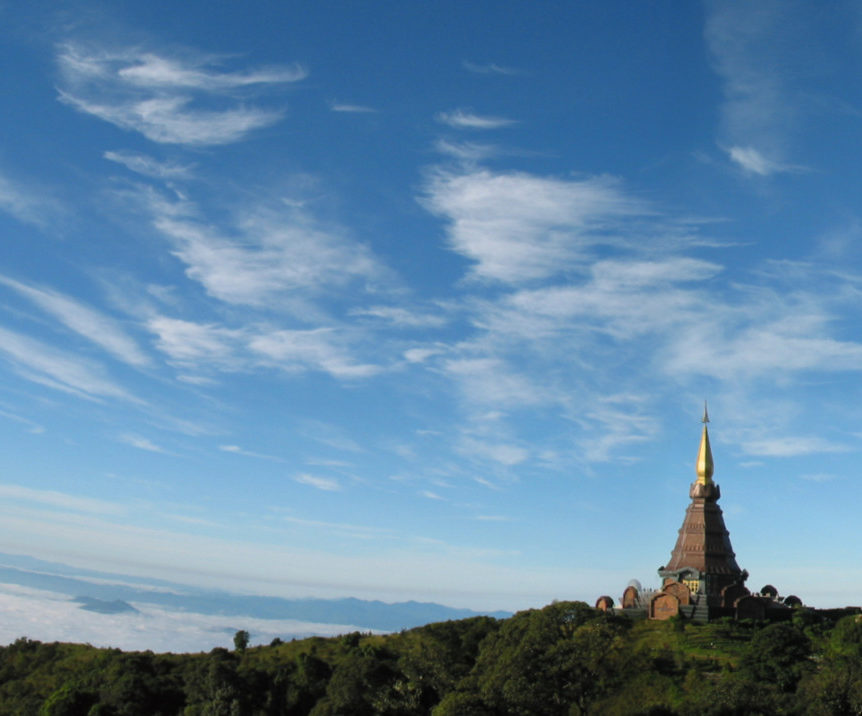
Chiang Mai
The ancient capital of the Lanna Kingdom founded in 1296, and the modern administrative center of the north, Chiang Mai is a marvel of cultural riches set amidst a stunning mountain landscape. A city of 250,000 people that grows to over one million with outlying districts included, Chiang Mai is a rapidly changing but consistently charming place. At its heart is the Old City, surrounded by mostly intact ancient walls and moats that guard meandering lanes and ornate temples. Within the Old City, the gilt-eaved Wat Chiang Man is one of the oldest structures, dating back 700 years and supposedly built by the city’s founders. Hundreds of elaborate Buddhist temples dot the city, some are well-known like the large 14th-century Wat Phra Singh and others are incorporated quietly into the cityscape and appear unexpectedly. Find some of the city’s best food at local markets and street stalls, and then spend the afternoon exploring the countryside. The nearby Doi Suthep-Pui National park boasts a network of forested hiking and cycling trails, waterfalls, and scenic overlooks—near the peak of Doi Suthep you can visit the beautiful 14th-century Wat That Doi Suthep.
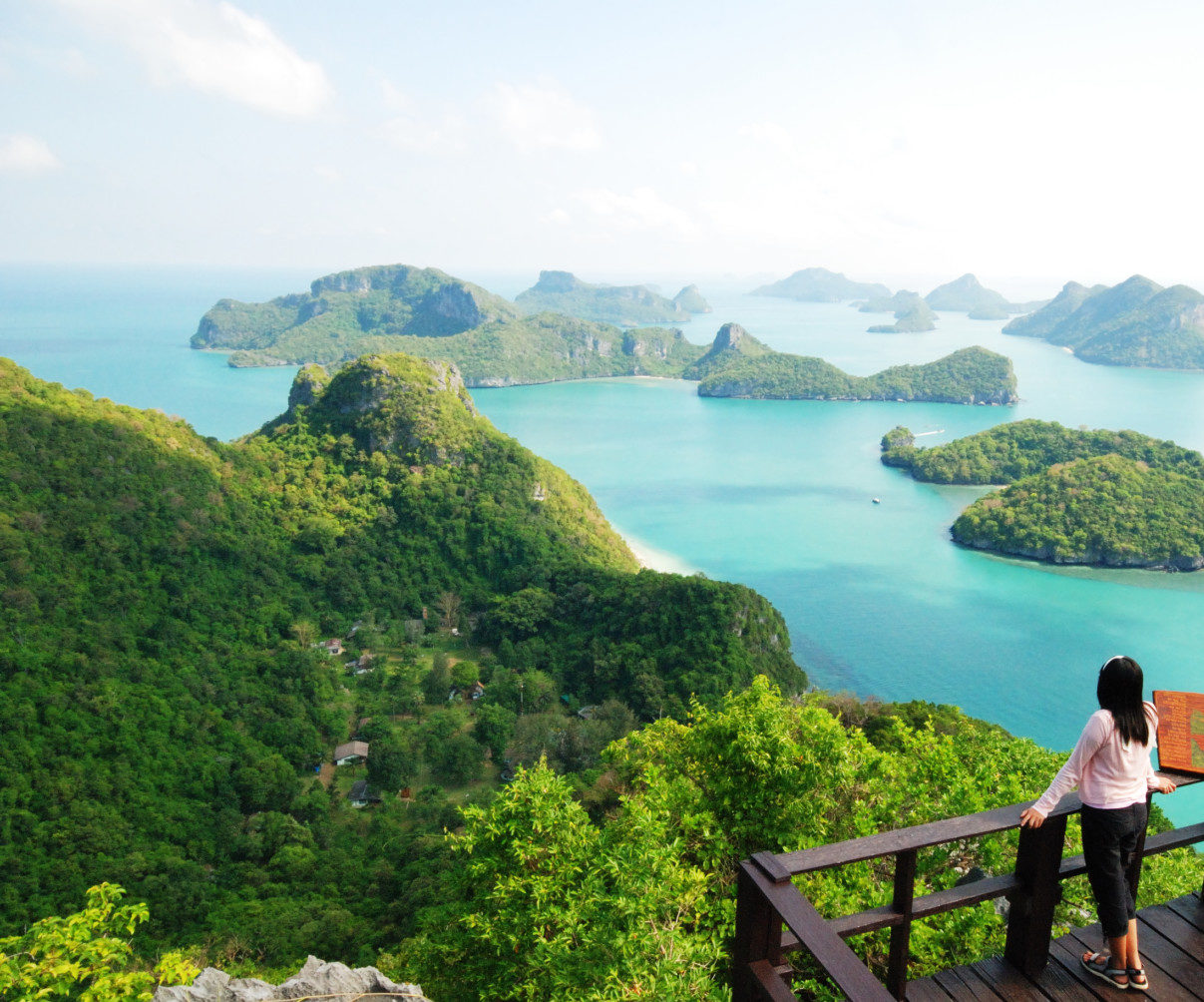
Koh Samui
Midway down the Gulf of Thailand, off the east coast of the Kra Isthmus, Koh Samui is an island paradise of palm-wreathed beaches and turquoise waters. From coconut groves to coral reefs, Thailand’s second largest island is flush with natural beauty—Koh Samui has the perfect island experience for everyone whether you are looking to dine in style, dance til the early hours of the morning, decompress with some yoga and a massage, or simply stretch out on sugar-white sand with clear water lapping at your toes. Hide out in a peaceful beachside bungalow or relax at a luxury villa or spa; revel in the boisterous nightlife of Chaweng Beach; stroll the timeless shores of Bophut’s Fisherman’s Village; unwind on the tranquil strand of Mae Nam Beach; or take a day trip to the nearby islands of Mu Ko Ang Thong National Park. Koh Samui is a delightful collage of mountainous rainforest, beaches boasting their own distinct vibes, vibrant towns, and quiet retreats—snorkel, swim, and bask in the idyllic glow of island life.
Cambodia
Home to the most dynamic ancient city on the planet, Cambodia is a country with rich cultural history and a turbulent recent past. While the archaeological ruins of Angkor are the country’s most widely recognized attraction, with good reason, Cambodia is filled with historical sites from ancient kingdoms to the French colonial architecture of the 19th century. Phnom Penh is the nation’s ever-evolving capital, where you will find museums and monuments dedicated to the atrocities of the Khmer Rouge; Battambang boasts fading colonial facades and hilltop temples; and Siem Reap is the modern gatekeeper to the marvels of Angkor. Pack your sense of adventure and sample some of Cambodia’s more exotic dishes like red tree ants with beef and holy basil, or more conventional cuisine like Khmer noodles and curries, fried fish, and delicious pork and rice. Step off of the beaten track and explore the rural countryside, or discover paradise on the southern beaches and islands of Sihanoukville, and visit the ruins and waterfalls of nearby Bokor National Park.
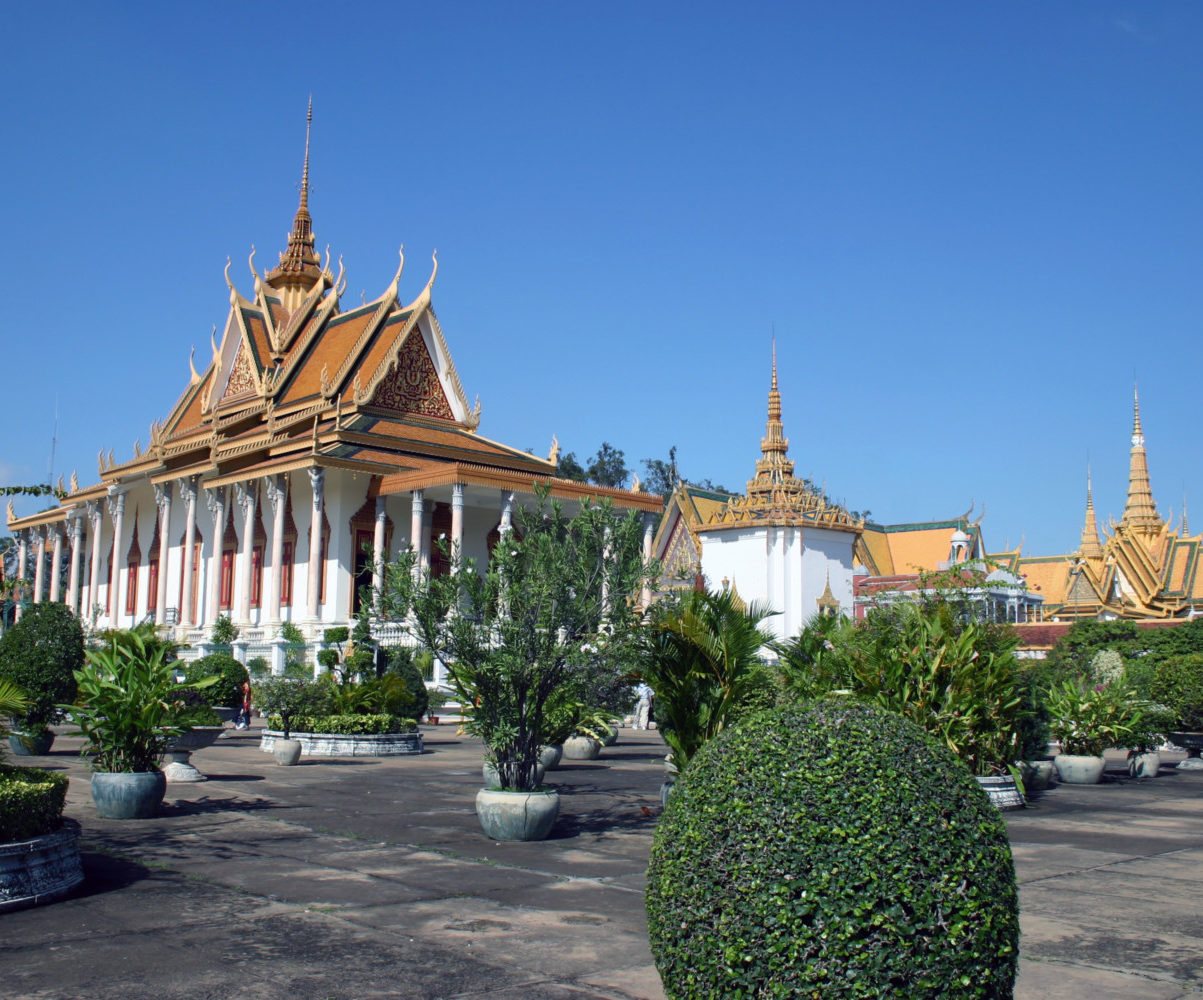
Phnom Penh
The bustling capital of Cambodia, located along the banks of the Tonlé Sap, Bassac, and the Mekong rivers, Phnom Penh is a whirlwind of chaotic streets, colorful markets, and living history. A city of over one million people, modern Phnom Penh took shape under French colonization at the end of the 19th century, after centuries of mixed fortune under an array of ancient kingdoms—the city has numerous colonial buildings and examples of ancient architecture scattered throughout the city. Visit the elegant National Museum of Cambodia’s enchanting collection of Khmer sculpture and art, which sits near the gilded Royal Palace—home to the King, therefore mostly closed to visitors, but you can tour the beautiful Silver Pagoda Buddhist temple next-door. Visiting the Tuol Sleng Genocide Museum and the Killing Fields of Choeung Ek are an emotionally profound experience, and an essential part of understanding the history that has shaped Phnom Penh—since the genocide carried out by the Khmer Rouge in the 1970s, the city has recovered remarkably. Enjoy the city’s lively food scene from delicious street food to fine dining, and kick back with the locals at sidewalk cafes and bars.
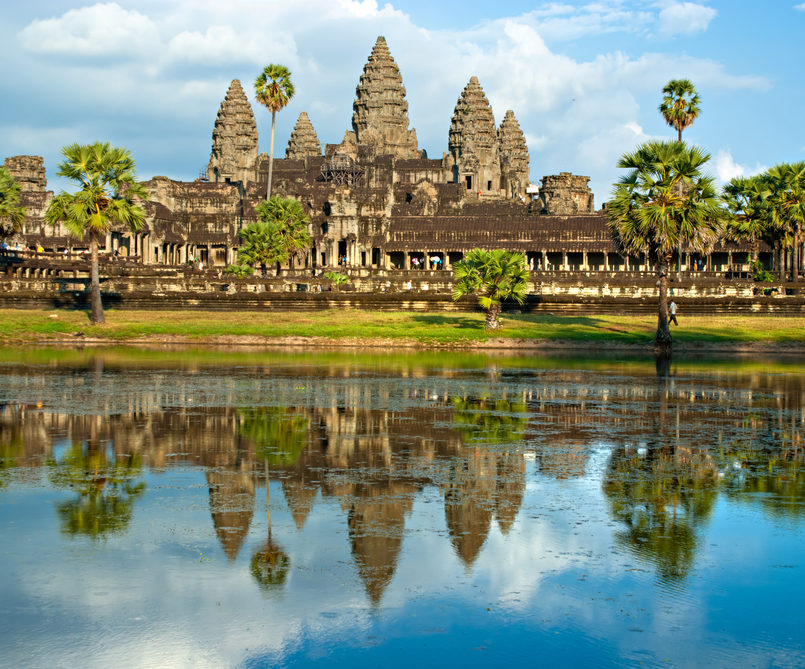
Angkor
A UNESCO World Heritage Site and a true marvel of the ancient world, Angkor is believed to be the largest city of the pre-industrialized world, the urban area encompassing almost 400 square miles. The capital of the Khmer kingdom from the 9th to the end of the 13th century, and home to the renowned religious monuments of Angkor Wat and Angkor Thom, this sprawling archaeological site could keep you busy for a lifetime. Plan on spending a few days in nearby Siem Reap to make sure you are able to visit more than Angkor’s headline attractions. The temple complex of Angkor Wat is the largest religious monument in the world, and lives up to every bit of the hype—you will be transported to an age of bygone glory immortalized in the distinctive stone architecture of the Khmer, whose outline also features at the center of Cambodia’s flag. Buildings are decorated with ornate sculpture and carvings, and are impregnated with religious significance and unsolved mysteries—the city’s majesty was unknown to the wider world until 1861, when French naturalist Henri Mouhot stumbled upon it. Though you will undoubtedly be sharing your experience of the city with other curious visitors, Angkor remains one of the most impressive human creations anywhere in the world.
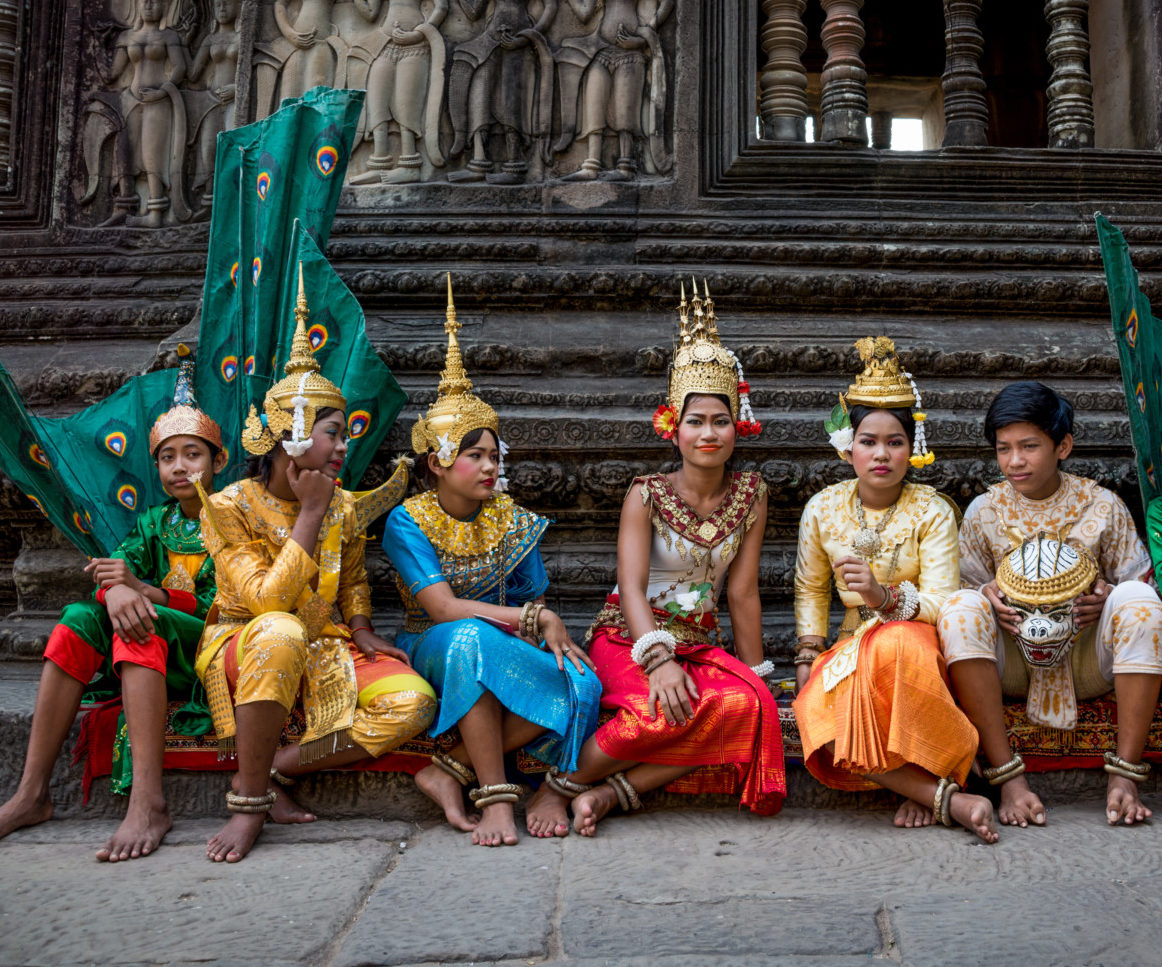
Siem Reap
The modern town that has grown to provide access to the archaeological ruins of Angkor, Siem Reap has everything you need to enjoy yourself after long days exploring the ancient site. There is an abundance of upscale hotels and quality restaurants, as well as numerous art galleries and shops. The markets of Siem Reap are a great place to track down artisan crafts, silk and clothes, and just about anything else you can imagine. The city has evolved to offer luxury spas, lively nightlife from backpacker bars to craft cocktails, and quality entertainment from music venues to acrobatics. On a day away from Angkor, visit a silk farm, the Les Chantiers Écoles artisan school, or brush up on Khmer history at the Angkor National Museum. Plan a morning to catch the sunrise at Angkor Wat, visit Angkor Thom and the Bayon temple, and make sure to plan a day or two to explore the lesser known sites within Angkor and further afield—this is not an area to rush away from, and the vibrant cityscape of Siem Reap will make it hard to leave.
Vietnam
From grand, French colonial architecture and tree-lined boulevards of Ho Chi Minh City to Chinese influenced temples and Japanese merchant houses of Hoi An, Vietnam is a tapestry of ancient traditions, multicultural legacies, pastoral countryside, and bustling modern cities. With thousands of miles of coastline, highland plateaus, verdant jungle, and pearly white-sand beaches, Vietnam boasts incredible biodiversity and otherworldly natural beauty. Sail among the karst islands of Halong Bay, hike into the ancient mountains of Phong Nha-Ke Bang National park, or stretch out on idyllic beaches that span the entire length of the country. Cycle through a landscape of rice paddies and verdant hills, shop colorful old town markets, and wander well-preserved historic ports. Visit Buddhist temples in the Marble Mountains of Da Nang, or the Temple of Literature dedicated to Confucius in Hanoi. A land of mystical beauty shaped by ancient kingdoms and colonial empires, Vietnam’s effortless allure is crowned by its fantastic food culture.
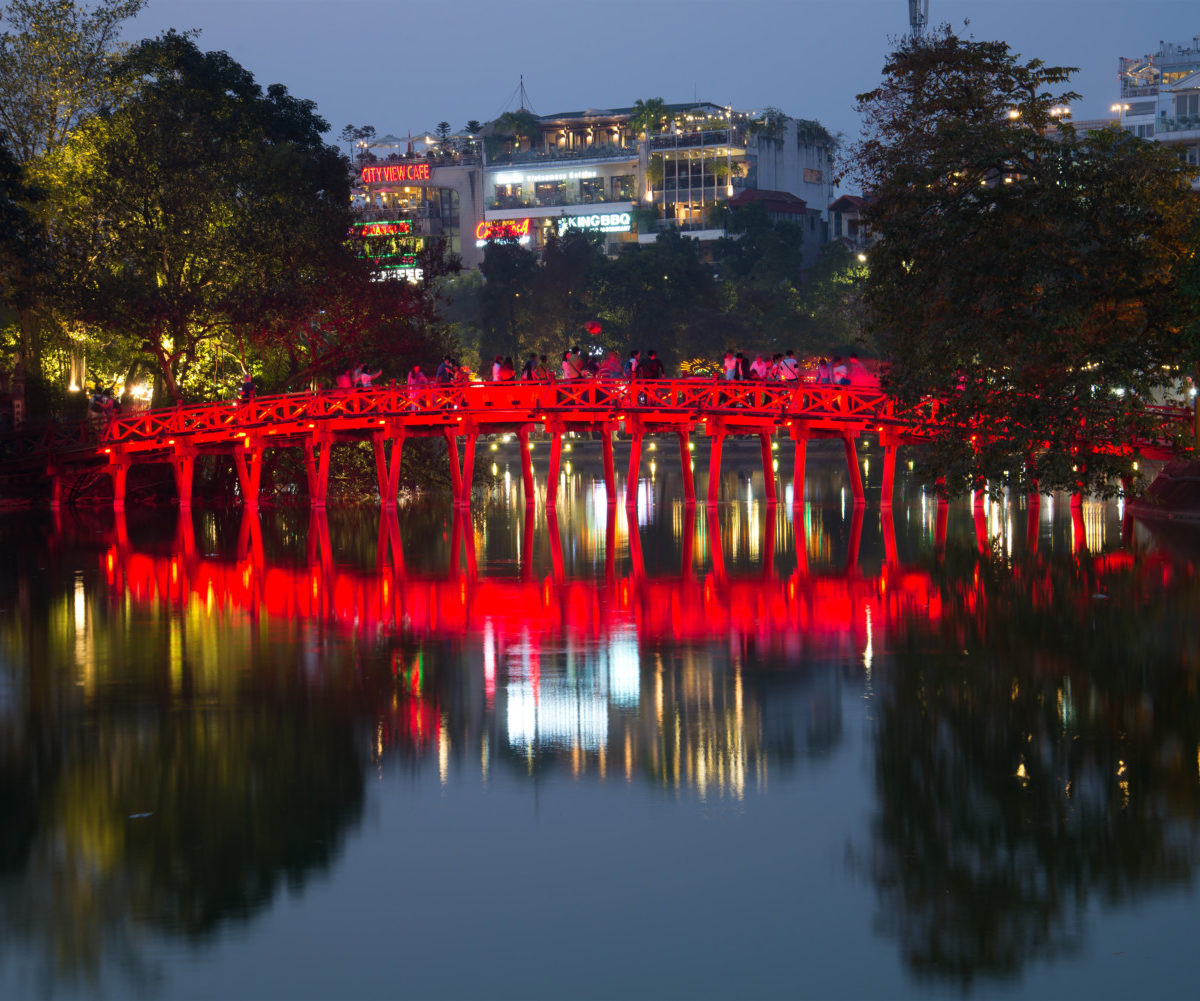
Hanoi
The chaotic and charismatic capital of Vietnam is an alluring blend of historic architecture and modern glamor, traditional culture flavored with Chinese and French influence coupled with a youthful embrace of the future. Hanoi celebrated its millennial birthday in 2010, and this rich legacy is on prominent display in the city’s labyrinthine Old Quarter, where crafts and trades are roughly aligned by street. Small temples are integrated into the cityscape alongside open-air restaurants and food stalls—line up with the locals and you will find some of the city’s most delicious cuisine. The cacophonous streets might seem overwhelming at first, but Hanoi operates at a fairly relaxed pace and many neighborhoods are conducive to exploring by foot—lakes, like Hoan Kiem Lake, pepper the city and are tranquil oases where you will find early morning crowds exercising and practicing tai chi. Explore Hanoi’s vibrant cultural traditions of music, dance, and puppetry, or visit quality museums like the Women’s Museum which exhibits women’s historic and contemporary influence in society. Tree-lined boulevards, French colonial villas, sidewalk cafés, rooftop bars, and bustling markets make Hanoi a city for endless exploration.
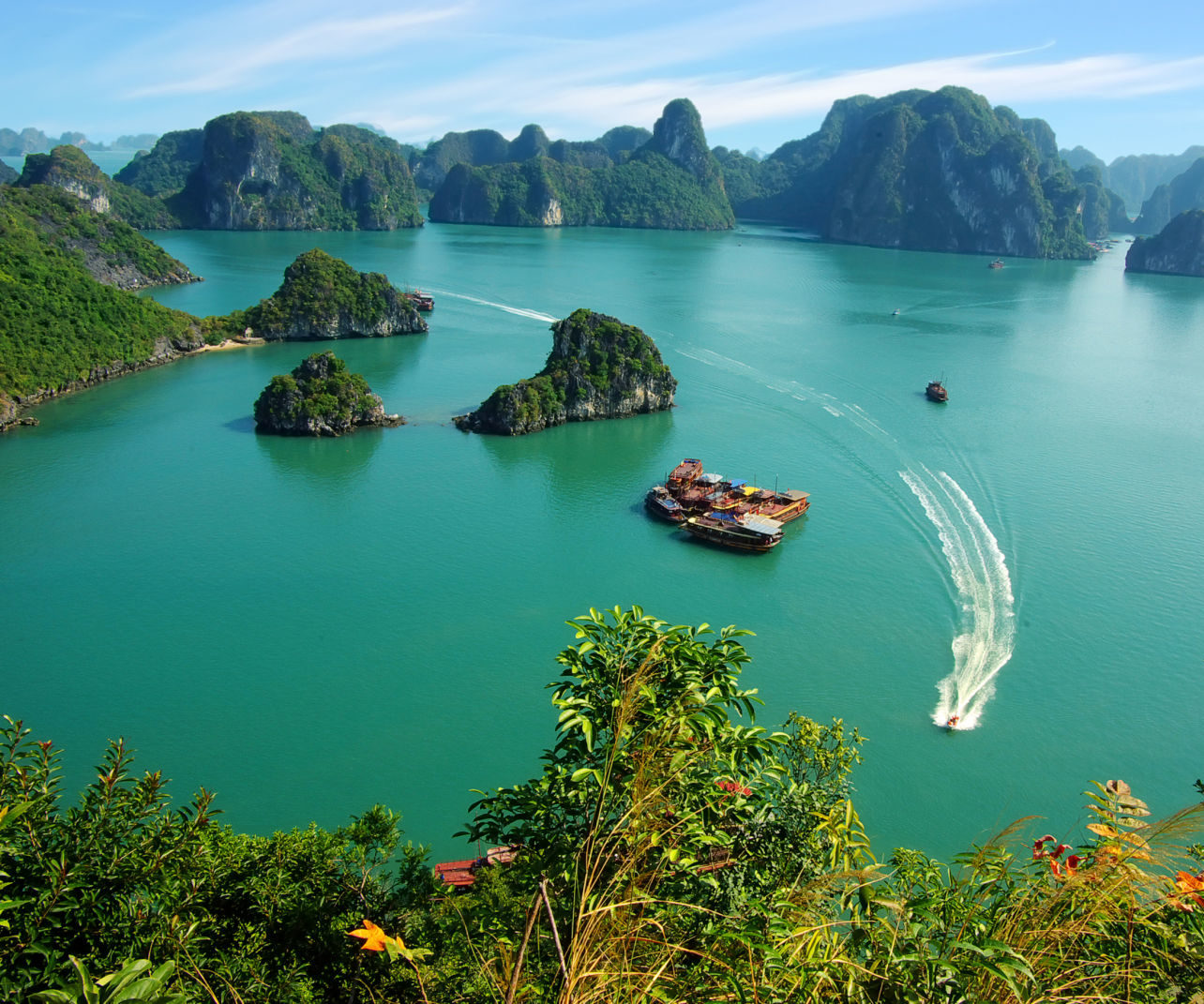
Halong Bay
Soaring karst limestone pillars and forested islets surge from the waters of the Gulf of Tonkin, scattered across this surreal seascape of secluded grottoes and sandy coves. One of Vietnam’s most enigmatic and ethereal environments, where mist clings to the water-worn cliffs, Halong Bay is a UNESCO-listed site and the crowning jewel of the northern coast. The best way to explore the area is floating amongst the myriad stone towers and islands on a relaxing boat tour—spend a night on-board to truly appreciate the magic of the bay. Cat Ba Island National Park covers most of the island of the same name and offers great hiking, kayaking, and a quieter setting than on the mainland. The park boasts incredible biodiversity, bursting with luxuriant plant-life and home to elusive animals like the endangered golden-headed langur.
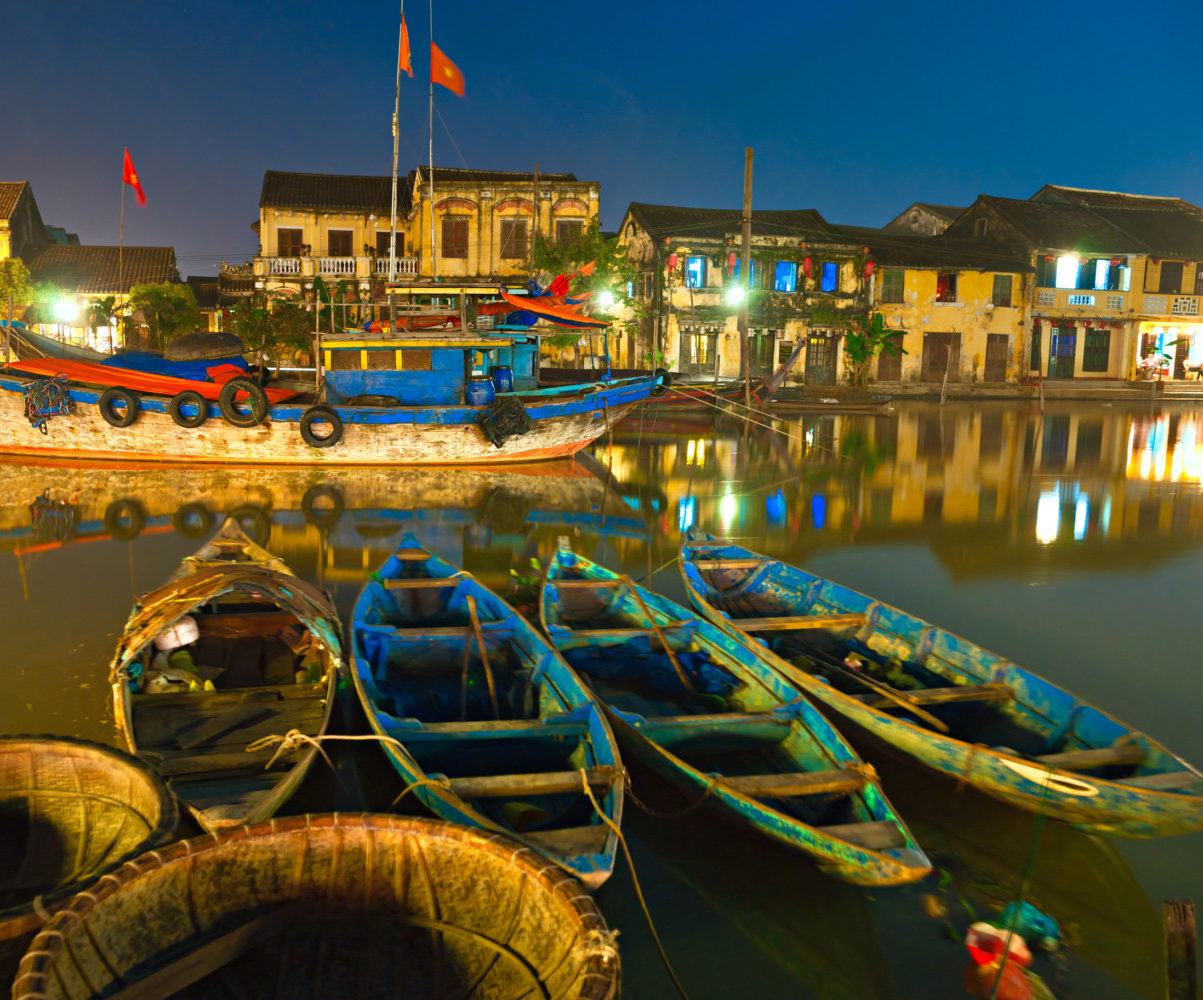
Hoi An
Spread out along the banks of the Thu Bồn River midway down the east coast of Vietnam, Hoi An is a historic city bursting with cultural sites. One of the country’s most influential ports from the 16th to the 19th century, thriving on trade with China and Japan, Hoi An is a delightful amalgam of architectural styles. The old town of the city is a designated UNESCO World Heritage Site, a well-preserved record of local and foreign styles; over 800 buildings are protected and offer a glimpse of colonial grandeur and artistic influences brought by international trade. A handful of the structures are open to tour, though the timeless feel of walking the narrow streets and along the maze of canals is the true highlight—shops, restaurants, and open-air markets, are hiding around every corner. Take a ride on a wooden sampan boat down the river or cross over to the quiet island of Cam Nan for a taste of local life. A beautiful and relaxing city, Hoi An is also a great base to explore nearby beaches, the Cham Islands, or for cycling trips into the countryside.
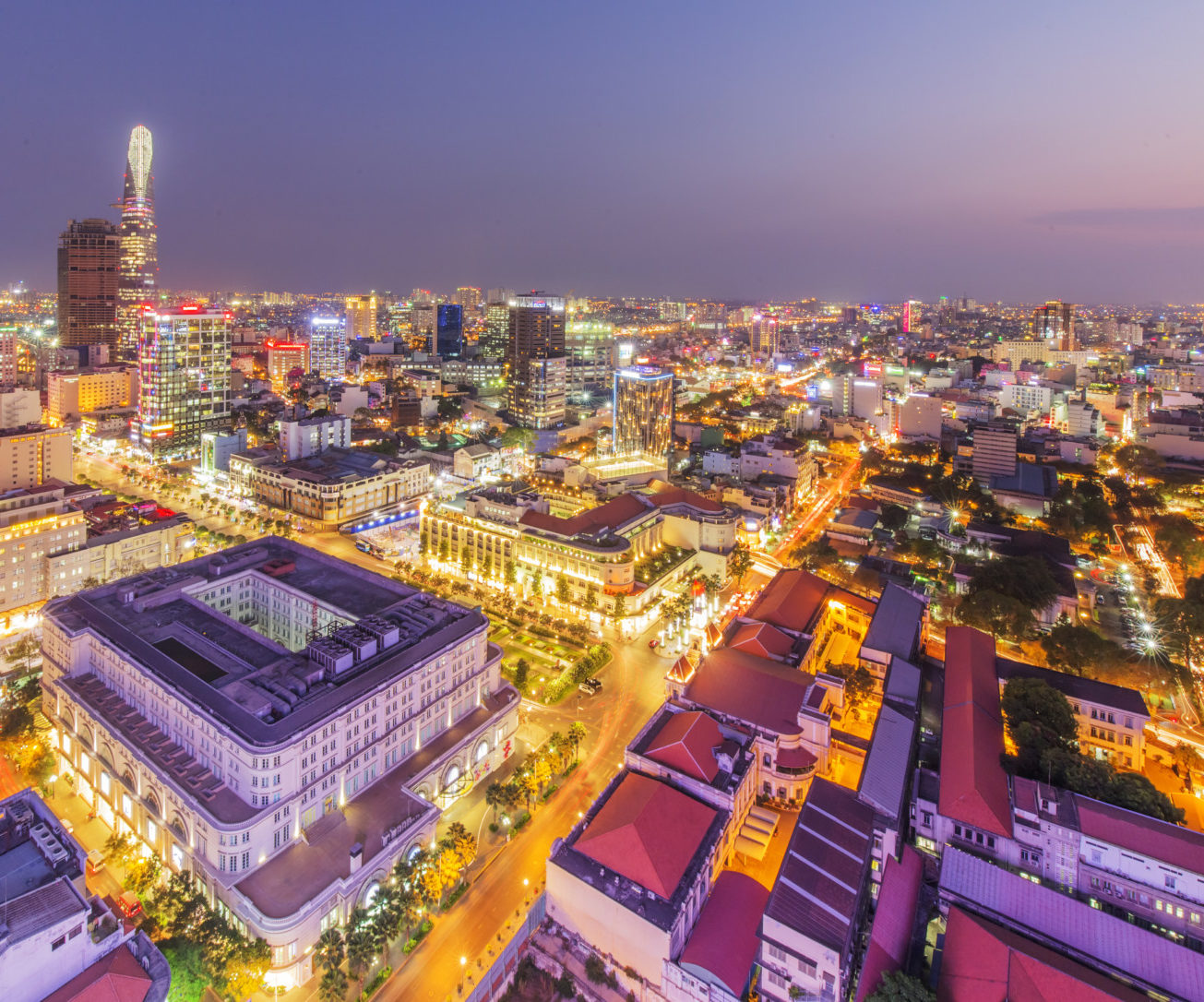
Ho Chi Minh City
Formerly named Saigon and known as the Pearl of the Orient under the influence of the French, Ho Chi Minh City is a dazzling jumble of speeding motorcycles, peaceful parks, roaring nightlife, and distinctive architecture. Walk wide tree-lined boulevards where French colonial buildings are on prominent display—the 19th-century Notre-Dame Cathedral was built entirely from materials brought from France—and then duck down narrow alleyways where food stalls and markets abound. The city thrums with energy, but shaded parks and the regal Dong Khoi street, lined with bars, cafés, and grand hotels, are perfect for people watching and a quiet respite from the buzz of traffic. Visit the War Remnants Museum for a glimpse of the legacy of the Vietnam War, take in the intricate religious art of the Jade Emperor Pagoda, shop the colorful bustle of the Ben Thanh Market and Le Loi street, and then head to Phan Thiet beach for an afternoon in the sun. Ho Chi Minh City is a dizzying modern metropolis that is an endlessly exciting blend of vibrant cultural heritage and 21st-century verve.
